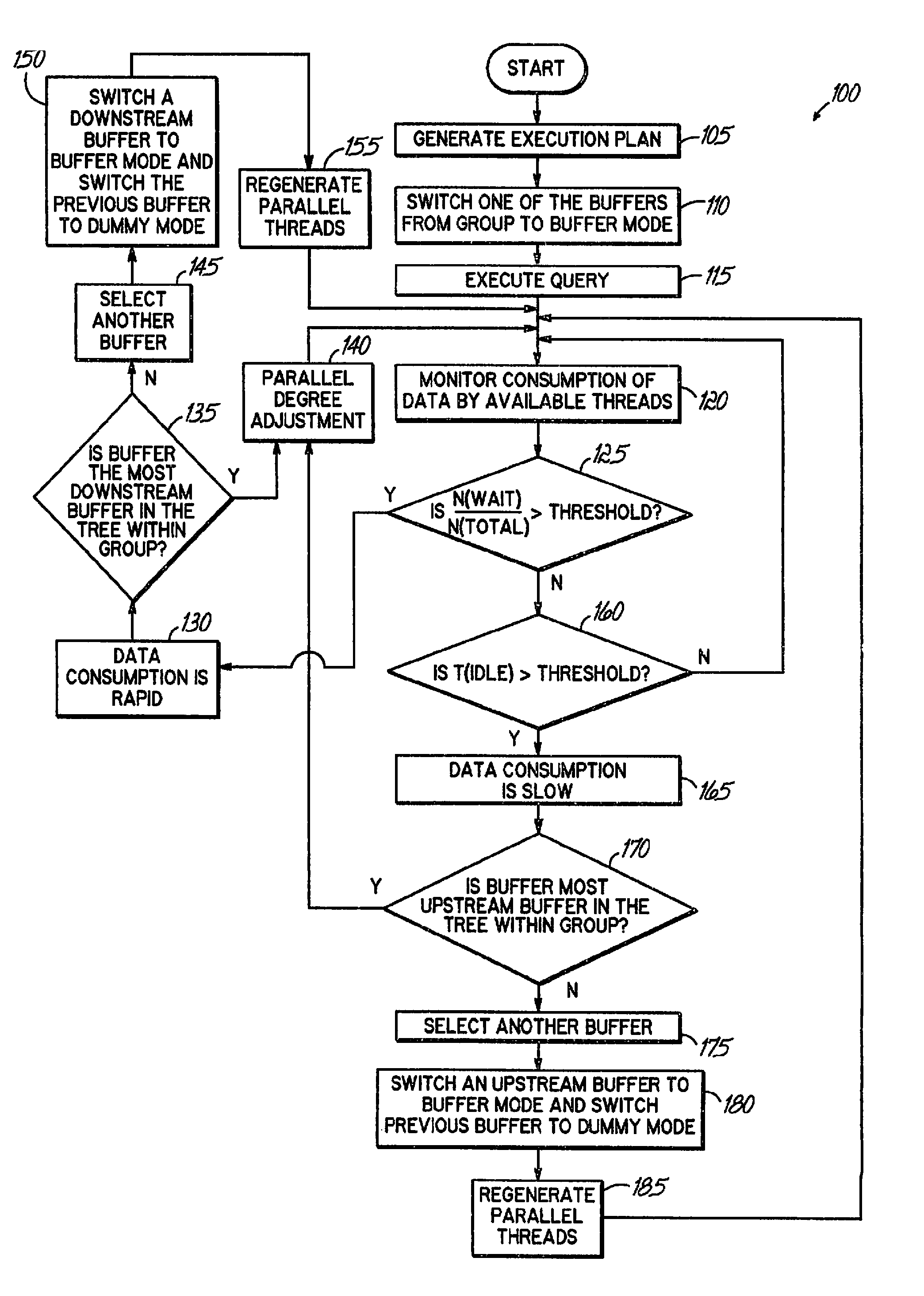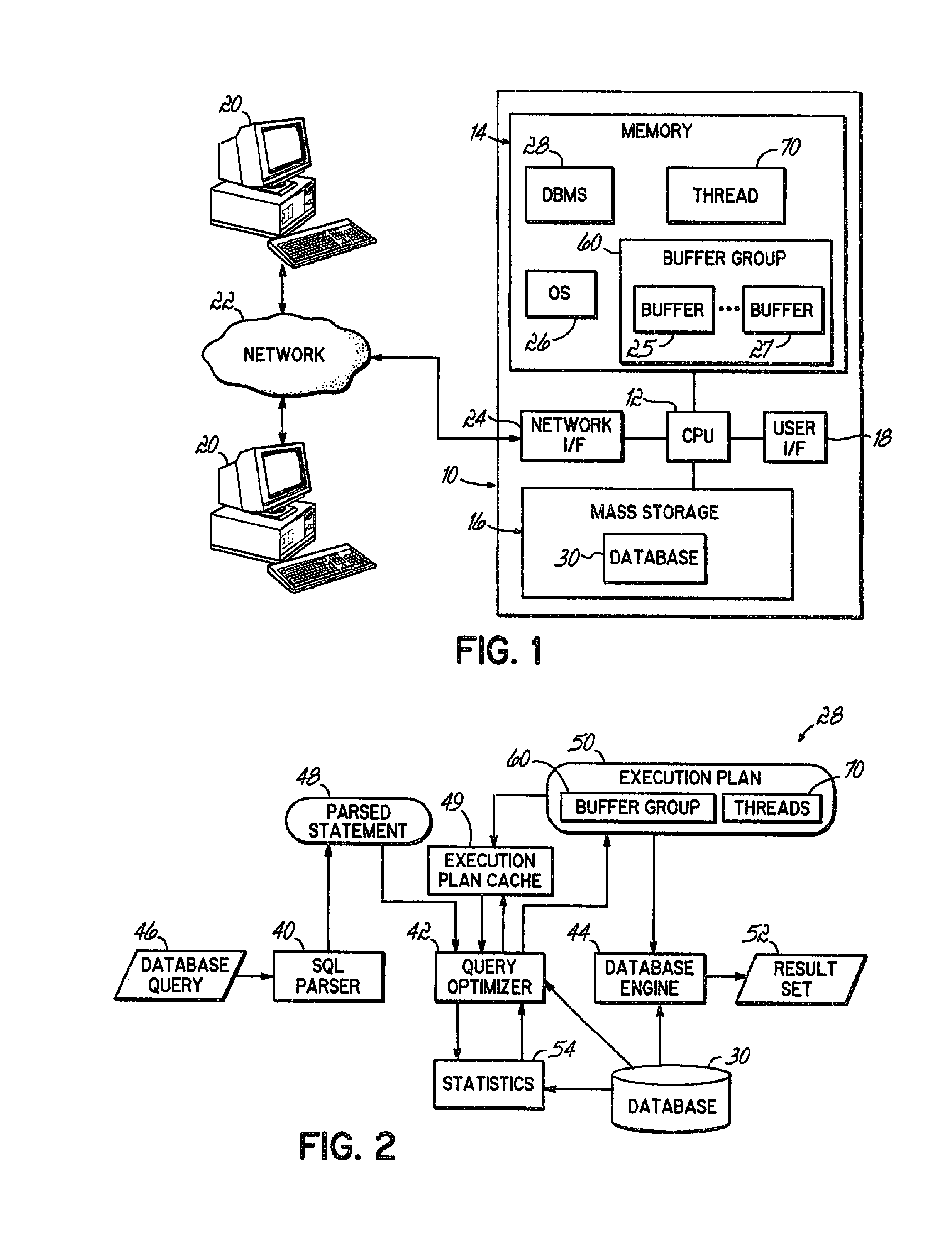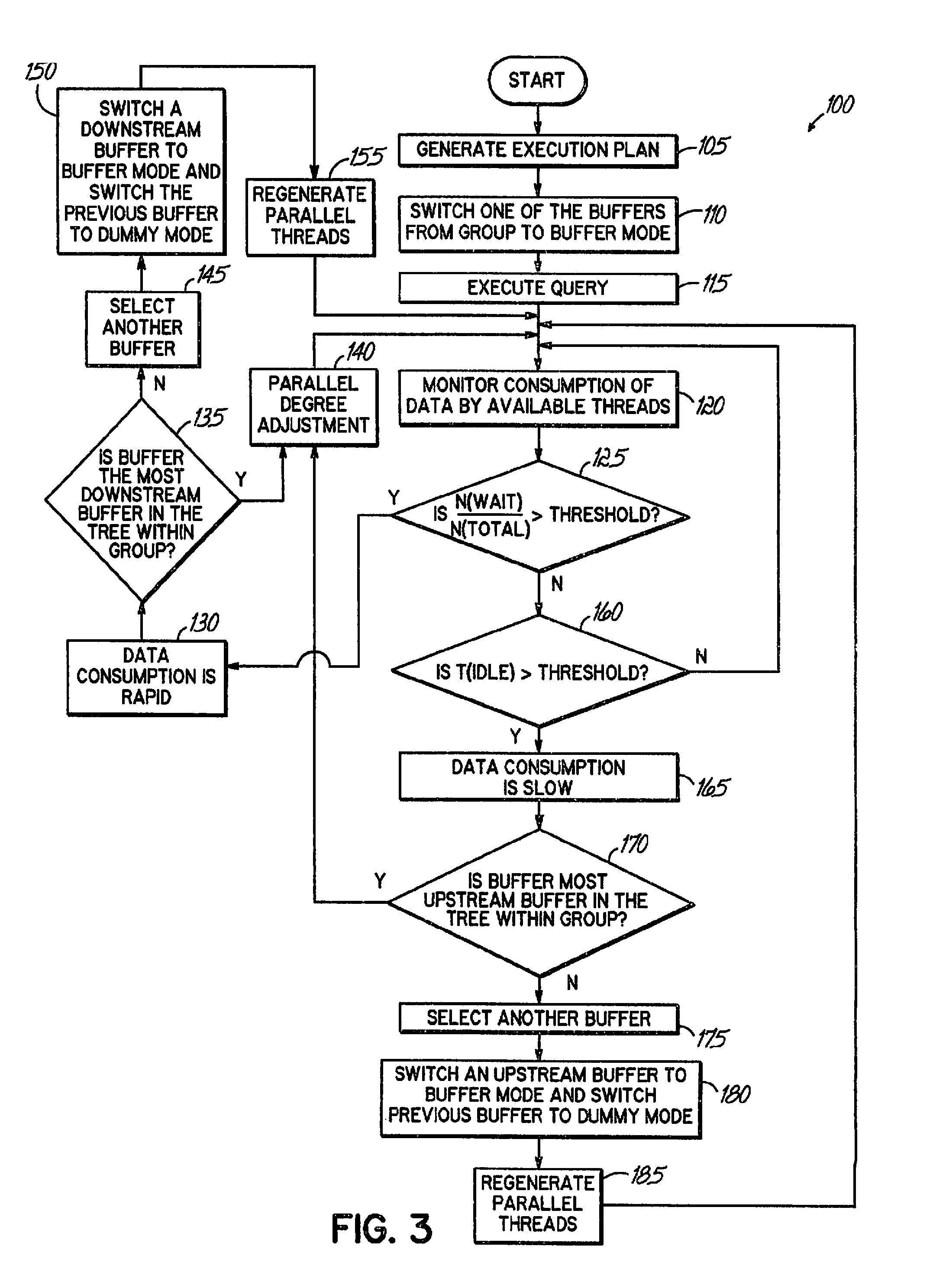Database query processing with dynamically activated buffers
a buffer and database technology, applied in the field of computer systems, can solve the problems of buffer overflow, stall upstream query processing, sub-optimal performance, etc., and achieve the effect of improving query performance and parallelism
- Summary
- Abstract
- Description
- Claims
- Application Information
AI Technical Summary
Benefits of technology
Problems solved by technology
Method used
Image
Examples
Embodiment Construction
[0022]Embodiments consistent with the invention dynamically activate and / or deactivate buffers during execution of a database query to optimize the location of a buffer used by an execution plan for the database query. The dynamic deactivation and activation is based on the monitoring of information associated with the consumption of data by a plurality of threads during execution of an access plan for the database query. Multiple selectively activatable buffers may be part of a group of buffers disposed at different buffer positions, such that one buffer in the group can be activated at any given time to effectively change the location of the buffer used by the execution plan. Moreover, as will be discussed in greater detail below, a push model and / or a pull model may be utilized consistent with the principles of the present invention to dynamically optimize the buffer position used by a database query.
[0023]Turning now to the Drawings, wherein like numbers denote like parts throug...
PUM
 Login to View More
Login to View More Abstract
Description
Claims
Application Information
 Login to View More
Login to View More - R&D
- Intellectual Property
- Life Sciences
- Materials
- Tech Scout
- Unparalleled Data Quality
- Higher Quality Content
- 60% Fewer Hallucinations
Browse by: Latest US Patents, China's latest patents, Technical Efficacy Thesaurus, Application Domain, Technology Topic, Popular Technical Reports.
© 2025 PatSnap. All rights reserved.Legal|Privacy policy|Modern Slavery Act Transparency Statement|Sitemap|About US| Contact US: help@patsnap.com



